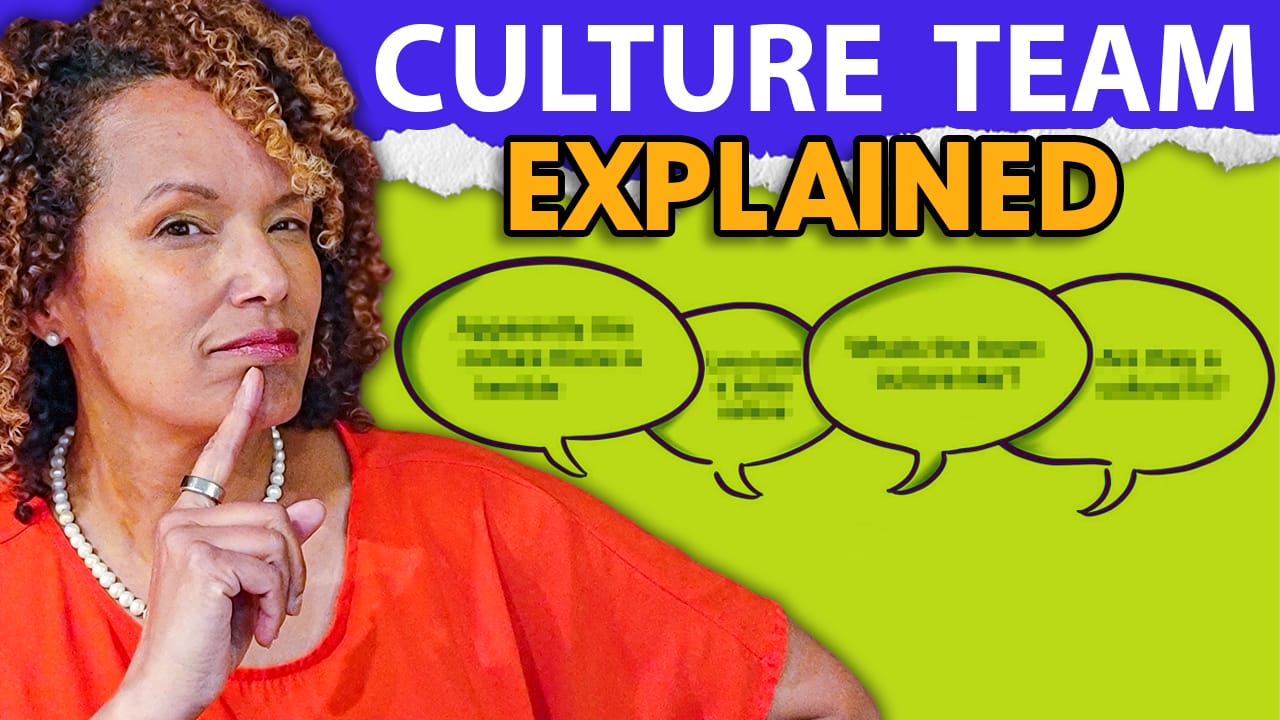Subscribe to the Leadership with Heart Podcast!
I remember my very first time witnessing the power of a branded culture team. I was working in a sister company to the company that had created a detailed process to establish and sustain their team. They had a recruitment process, they had a unique name, they had a clear focus and they had executive support. I could see the excitement around the members of the team and those who wanted to be on the team. They seemed all put together and fully brought into the change that they wanted to see in their workplace. They didn’t need to wait for permission.
Do you believe that employees are valuable resources in shaping and maintaining a positive organizational culture? That is what caring leadership is all about!
Great cultures don’t happen by accident, you must get employee buy in.
If you’ve struggled with maintaining great culture in the past, let me introduce you to the concept of Culture teams.
An employee-led culture team is a group of employees who come together voluntarily to help shape and promote the organization’s workplace culture.
This team is typically composed of individuals from various departments and levels within the company, and their primary responsibility is to foster a positive and inclusive workplace culture.
The key responsibilities and functions of an employee-led culture team often include:
- Culture advocacy,
- Employee Engagement,
- Diversity and Inclusion,
- Feedback Communication,
- Organizational values,
- Culture initiatives,
- Change management,
- Recognition and celebration.
Culture advocacy
The members of the team act as champions for the organization’s core values, mission, and vision to help reinforce these principles throughout the workplace. Even if new initiatives have some up in arms, the culture team stands in allegiance with said initiatives because they had a say in the initiative’s formation.
Employee Engagement
They work on initiatives and activities that enhance employee engagement, satisfaction, and well-being, such as organizing team-building events, social activities, and recognition programs. This is one of the team’s core objectives.
Diversity and Inclusion
These teams often play a crucial role in promoting diversity and inclusion within the organization. They may lead efforts to create a more diverse workforce and foster an inclusive workplace culture where everyone feels like they belong.
Feedback Communication
The culture team serves as a conduit for communication between employees and management. They gather feedback on cultural issues and suggest improvements. They ensure that they are the voice for the majority of employees inside the company.
Organizational values
They help ensure that the organization’s core values are integrated into daily operations and decision-making processes. So, if they see others act in conflict with those values, they speak up.
Culture initiatives
They plan and implement initiatives, such as training programs, workshops, and communication campaigns, to reinforce the desired culture. They do this by continually including their coworkers in ideation.
Change Management
When the organization goes through significant changes, the employee-led culture team can help manage and support the transition by aligning the culture with the new direction. They make sure that more voices are heard through the change process, gathering greater buy-in.
Recognition and Celebration
Organizing events and celebrations to acknowledge and appreciate employees’ contributions and achievements. This could be birthdays, anniversaries, customer celebrations, cultural celebrations, or setting up team celebrations.
Overall, what you should take from all of this is that without having these eight different components and responsibilities for creating an employee-led culture team, there would be no structure and less positive results. In order for an employee-led culture team to work, you need to address the diversity and inclusion aspects, the communication aspects, the values, and the engagement.
Podcast
In this episode, Heather explores the pivotal role of employees in shaping and preserving a positive organizational culture. She introduces Culture Teams, emphasizing the intentional effort and employee buy-in required for great cultures. Heather highlights the responsibilities of employee-led culture teams, spanning cultural advocacy, employee engagement, diversity and inclusion, feedback communication, and more. These teams play a vital role in aligning organizational values, managing change, and celebrating employee contributions.
Watch the video below
Watch the podcast in video here
The Listening Guide
Create a listening culture that elevates the employee experience with The Listening Guide.
Discover 3 approaches to listening inside an organization and ensure those you lead feel heard.
Mentions
Connect with Heather on LinkedIn
Subscribe, rate, and review the podcast on Apple Podcasts
Listen to the podcast on Spotify
Connect with Heather
WHEN YOU’RE READY, HERE’S HOW WE CAN HELP:
Engage your people with work culture consulting:
https://employeefanatix.com/
Hire Heather to speak to your group:
https://www.heatheryounger.com
Access free Art of Caring Leadership resources:
https://www.caringleadership.co/free-downloads
Let’s connect on social
https://linktr.ee/heatheryounger
About Heather R Younger
Heather R Younger is a highly sought-after speaker, 2x-TEDx speaker, diversity, equity and inclusion strategist, and contributor to leading news outlets. She is also the Founder and CEO of Employee Fanatix, a leading employee engagement and consulting firm.
After over 25,000 employee engagement surveys and years of working with organizations to transform employee engagement, here’s what Heather has seen over and over:
When you know how to listen, employees will tell you exactly what they need to bring their full selves to work.
Book Heather to speak at your event or organization. Visit heatheryounger.com or https://www.cmispeakers.com/heather-r-younger for more details.














